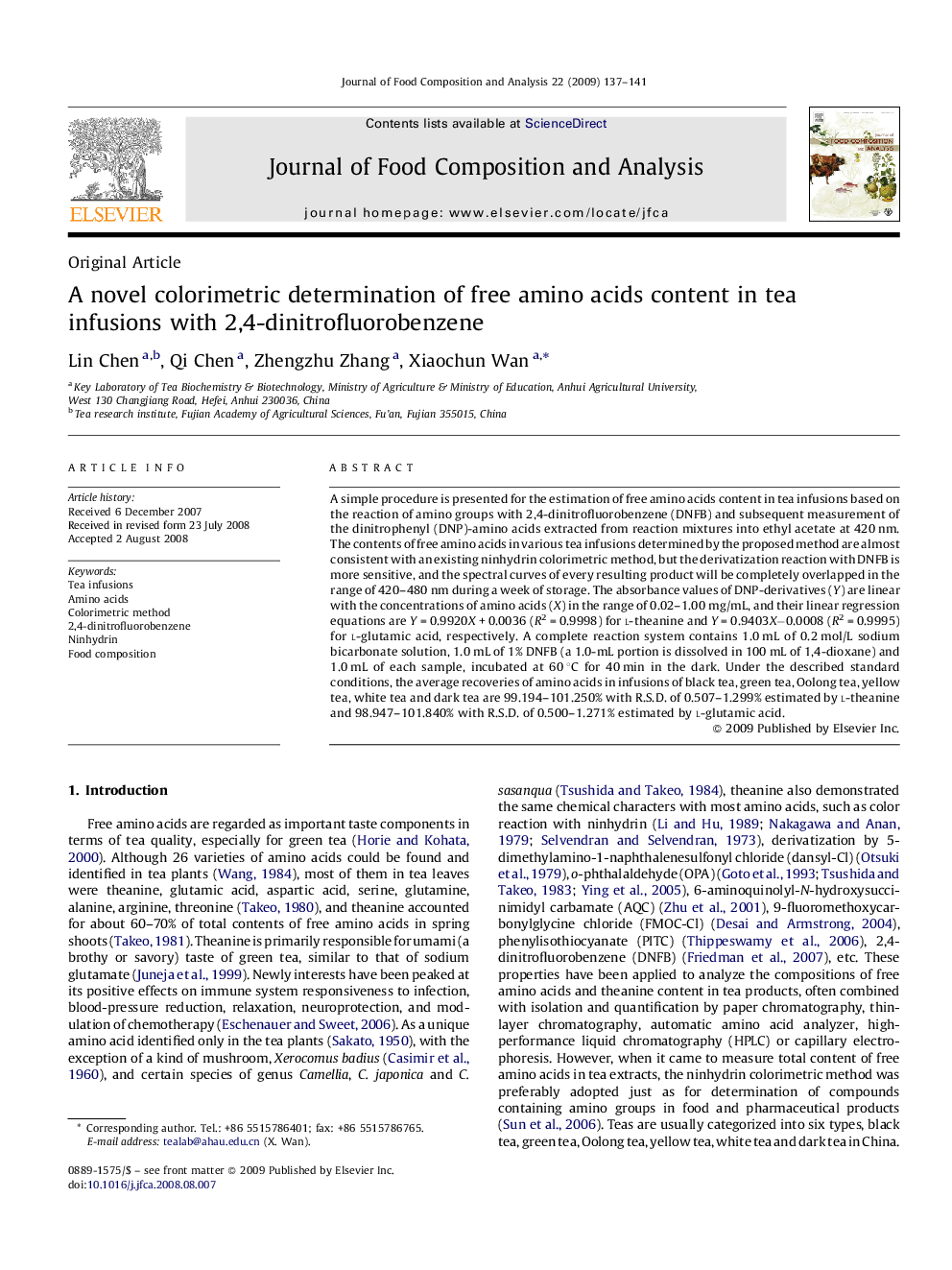| Article ID | Journal | Published Year | Pages | File Type |
|---|---|---|---|---|
| 1218643 | Journal of Food Composition and Analysis | 2009 | 5 Pages |
A simple procedure is presented for the estimation of free amino acids content in tea infusions based on the reaction of amino groups with 2,4-dinitrofluorobenzene (DNFB) and subsequent measurement of the dinitrophenyl (DNP)-amino acids extracted from reaction mixtures into ethyl acetate at 420 nm. The contents of free amino acids in various tea infusions determined by the proposed method are almost consistent with an existing ninhydrin colorimetric method, but the derivatization reaction with DNFB is more sensitive, and the spectral curves of every resulting product will be completely overlapped in the range of 420–480 nm during a week of storage. The absorbance values of DNP-derivatives (Y) are linear with the concentrations of amino acids (X) in the range of 0.02–1.00 mg/mL, and their linear regression equations are Y = 0.9920X + 0.0036 (R2 = 0.9998) for l-theanine and Y = 0.9403X−0.0008 (R2 = 0.9995) for l-glutamic acid, respectively. A complete reaction system contains 1.0 mL of 0.2 mol/L sodium bicarbonate solution, 1.0 mL of 1% DNFB (a 1.0-mL portion is dissolved in 100 mL of 1,4-dioxane) and 1.0 mL of each sample, incubated at 60 °C for 40 min in the dark. Under the described standard conditions, the average recoveries of amino acids in infusions of black tea, green tea, Oolong tea, yellow tea, white tea and dark tea are 99.194–101.250% with R.S.D. of 0.507–1.299% estimated by l-theanine and 98.947–101.840% with R.S.D. of 0.500–1.271% estimated by l-glutamic acid.
